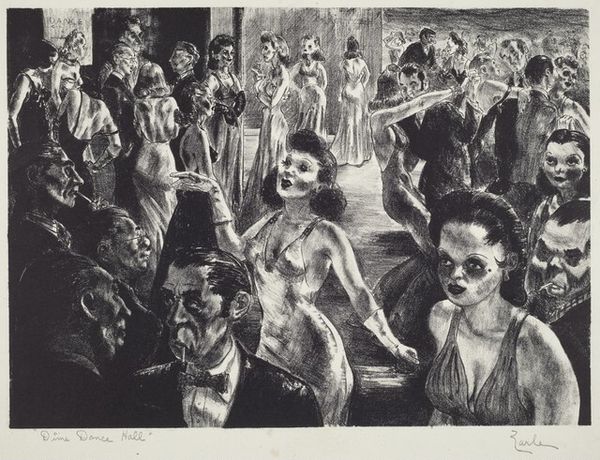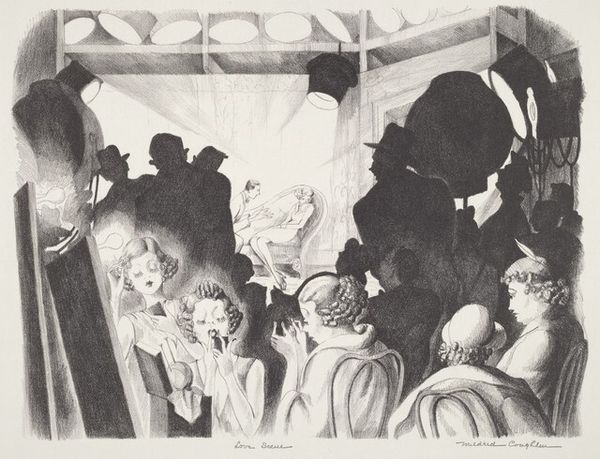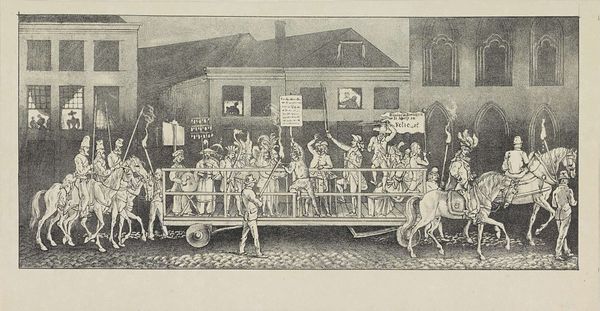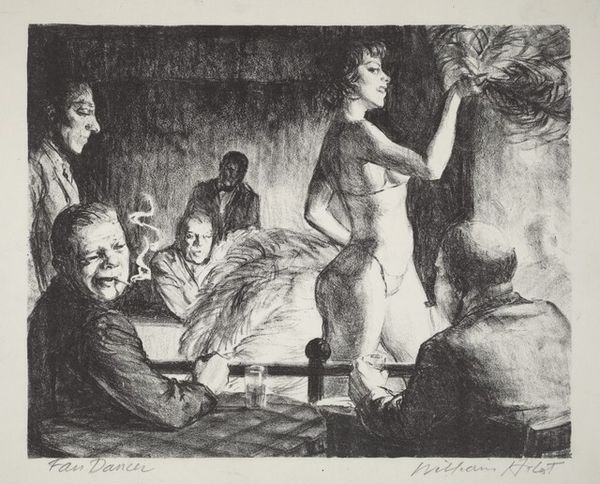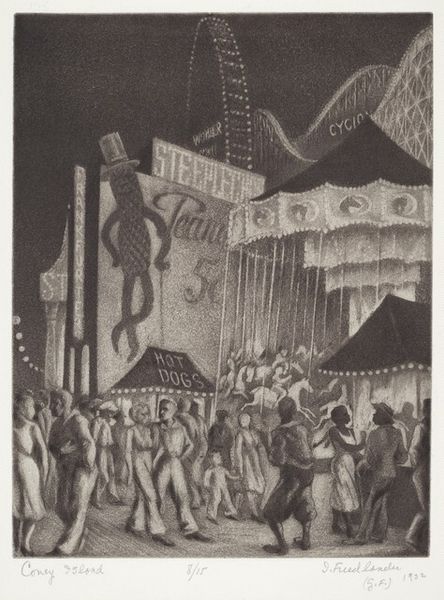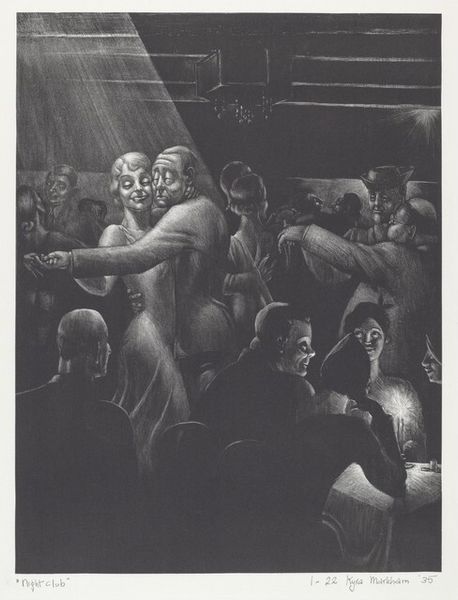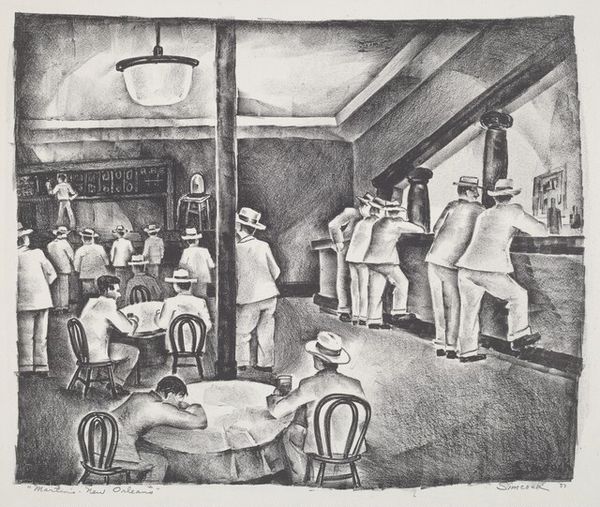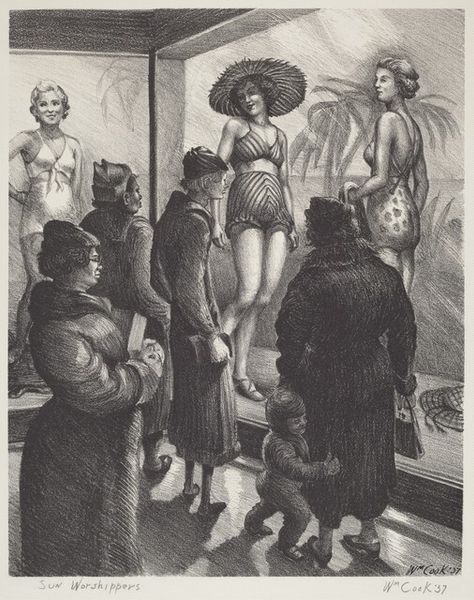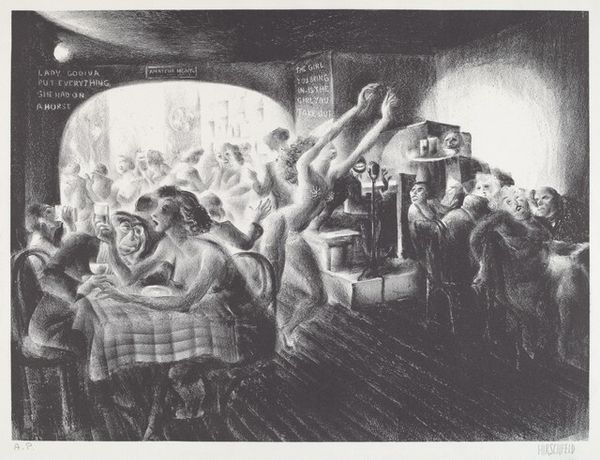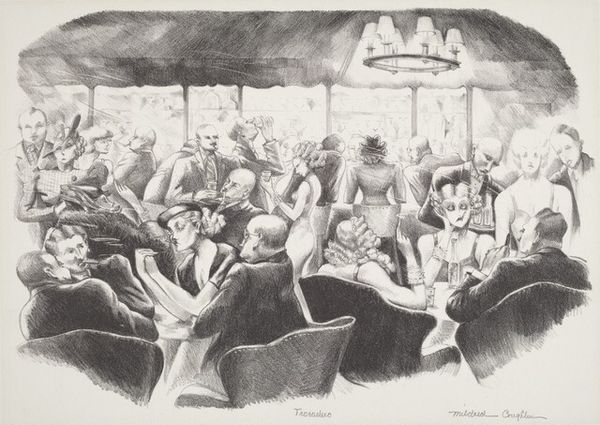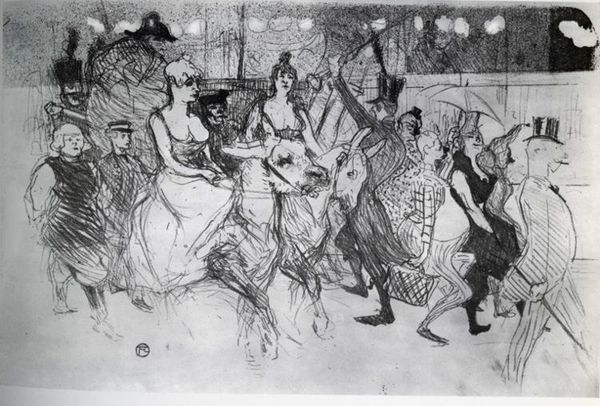
drawing, print, pencil
#
pencil drawn
#
art-deco
#
drawing
#
narrative-art
# print
#
pencil sketch
#
charcoal drawing
#
figuration
#
pencil drawing
#
pen-ink sketch
#
pencil
#
genre-painting
#
erotic-art
Dimensions: image: 245 x 315 mm sheet: 293 x 403 mm
Copyright: National Gallery of Art: CC0 1.0
Curator: Immediately, I'm struck by the stark contrast of light and shadow, the dynamism captured in the pencil strokes. It feels very lively, almost… illicit. Editor: We’re looking at "Crazy Rhythm," a print by William Wolfson, created around the 1920s. The work portrays a lively scene within what appears to be a nightclub, dancers center stage. It invites a discussion about the representation of nightlife and the role of art during the Jazz Age. Curator: The gaze is… complicated. A dance performance unfolds, a mix of predominantly white audiences. There are the black servers and musicians almost pushed to the periphery, a visible hierarchy on display. Does Wolfson critique this, or simply document it? Editor: The print reflects the Art Deco aesthetic but is grounded in the socio-cultural landscape. The Jazz Age offered a limited, performative, inclusion for Black musicians, while other members of the Black community had very restricted access, and there are parallels with current forms of cultural appropriation we must consider. The print preserves a sense of history as much as an artistic style. Curator: The title adds another layer: "Crazy Rhythm." Is this the rhythm of the music, the dance, or the social contradictions of the time? What's compelling is how this artwork acts as a document, prompting reflection on identity, race, and societal norms. It almost dares us to engage with these uneasy truths. Editor: Museums and galleries play a critical role here. It's vital they confront and contextualize the inherent politics of imagery, offering layered understandings of social tensions during the 1920s but also today. They become public forums rather than mere repositories. Curator: I appreciate how art, even a "simple" drawing, can open a space for dialogue, to unravel power dynamics, prompting us to critically examine the past but also the narratives being created around us now. Editor: And for me, understanding the artistic intention intertwined with historical forces—the socio-political currents influencing the imagery, are the most important way to connect the art of the past to our present.
Comments
No comments
Be the first to comment and join the conversation on the ultimate creative platform.
